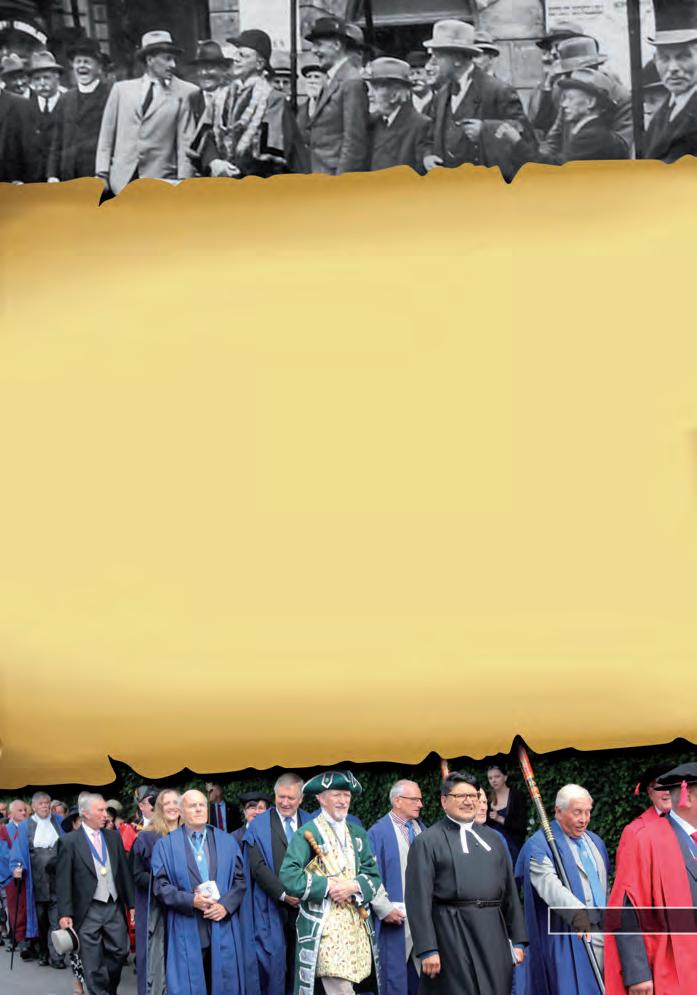
2 minute read
Bromsgrove’s Court Leet
Oyez, Oyez, Oyez: The story of Bromsgrove’s Court Leet H ave you ever wondered why men and women in fancy hats parade down the High Street on the third Saturday in June? They’re Bromsgrove’s Court Leet, one of the town’s most ancient institutions. The Court Leet is a survival from the manorial system introduced to England by William the Conqueror. Under this system, all land was owned by the king who either granted individual manors to his supporters or, as in the case of Bromsgrove, retained it for his own use (known as a ‘royal desmesne’).
The Court Leet governed the manor on a day-to-day basis. The word ‘Leet’ comes from the Anglo-Saxon term ‘lethe’, meaning a low court. The Courthouse was originally at the Lickey, as in medieval times the Manor of Bromsgrove extended from Grafton to Kings Norton. One privilege of being ‘Royal’ was that the appointment of the Lord’s steward – his chief agent – was subject to the approval of the Court.
Advertisement
The Court met regularly, the most important meeting being in the autumn when the officers of the court were chosen by the manor’s freeholders. The two most important officers were the Bailiff, who acted as the court’s chief officer, and the Reeve, who was responsible for the collection of head rents for the Lord of the Manor. It was customary for the Reeve to succeed to the office of Bailiff.
A Headborough and Constables were appointed; and a Bellman, who besides acting as town crier, was required to clean the courtroom and the church steps and ring the market bell. There were also Aletasters, Breadweighers, and Searchers and Sealers of Leather, who were the equivalent of today’s trading standards officers.
Offenders could be presented and ‘amerced’ (fined) for a variety of offences. If unable to pay, they might be put in the stocks which were often constructed so that they could also be used as a whipping post, another popular form of punishment. In 1681, 27 victuallers were presented to the court for breaking the assize of ale and eight bakers for breaking that of bread. As long ago as 1203, a law was passed for regulating the sale of bread and bakers who offended could be fined heavily and the bread given to the poor.
The Bromsgrove Court has a record of its Bailiffs going back to 1494, though it is only complete since 1733. It includes names from many old Bromsgrove families, some of whom gave the court lengthy service. When not in use, the officers’ poles are displayed in a special showcase in the coffee bar at the Princess of Wales Hospital. They are inscribed with the date of origin and names of the Bailiffs, Reeves and other officers before whom they have been carried.
During the 19th century, the powers of the manorial courts were eroded by various acts of parliament, which transferred their responsibilities to other bodies. In 1977, the Administration of Justice Act abolished the right of Courts Leet to determine any legal matter. In recognition of their long tradition, however, the courts themselves were retained, allowing them to continue in a ceremonial role.
Neil Beaumont, a historian of Bromsgrove’s Court Leet, will be delving into more of this fascinating story at The Bromsgrove Society’s local history meeting on Tuesday, March 17th at the Methodist Centre, Stratford Road. For more details, visit www.bsoc.co.uk










